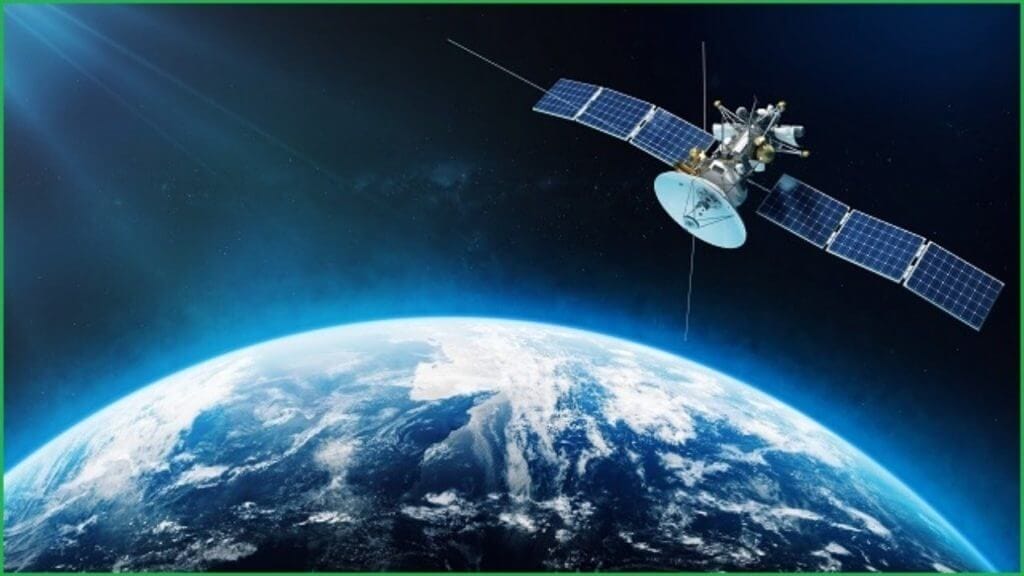
Same Day
Shipping for
Online Orders
Before 1pm
30 day
Money Back
Guarantee
Low-earth orbit (LEO) satellites are said to be the technology to revolutionise remote connectivity. With more than a third of the world still existing without connectivity to the internet, these satellite constellations can help connect the unconnected and bridge the digital divide that’s leaving remote and rural communities behind.
Satellites are not new, the Earth is surrounded by satellites, each one serving a different and specific role. Traditional “Geosynchronous Earth Orbit” or GEO satellites work by staying in geosynchronous orbit at 35,786 km above the Earth, staying focussed on one part of the land at a time, whereas ‘Low Earth Orbit’ or LEO satellites circle the earth in orbits of 500 km to 1,200 km moving their communication beams as they move over the surface of the earth.
Developing a robust digital infrastructure that can reach everyone everywhere is critical to closing connectivity gaps.
Broadband internet access requires an extensive amount of expensive underground (and underwater) cables, and for the majority of the world’s most remote areas, satellite-based connectivity is generally the only option. LEO satellites can connect people to high-speed internet where traditional cabled infrastructure is unviable, making them an attractive solution to close the rural connectivity gap.
LEO satellites orbit much closer to the planet (up to 2,000 km above the earth’s surface) than the traditional geostationary satellites (about 36,000 km above the earth’s surface). They operate in a revolving network where multiple satellites are needed to provide internet coverage. This allows them to provide connectivity during air travel and even in the middle of the ocean.
What is Starlink?
Starlink is the satellite internet constellation of artificial satellites operated by SpaceX, providing satellite Internet access coverage to 36 countries. It aims for global coverage and incredibly low latency – something previously unheard of in the satellite industry or reserved for critical applications due to its expense. SpaceX started launching Starlink satellites in 2019. As of July 2022, Starlink consists of over 2,700 small satellites in low Earth orbit (LEO) at 550 km, which communicate with designated ground transceivers. Starlink provides internet access to over 500,000 subscribers as of June 2022.
The list of countries currently serviced by the growing network of low-earth orbit satellites includes the US, Canada, the UK, France, Germany, Austria, the Netherlands, Ireland, Belgium, Switzerland, Denmark, Portugal, Australia and New Zealand with more areas coming online every day.
The major difference between Starlink satellites and traditional satellites is that they’re 60 times closer to Earth. This means Starlink can deliver faster, more responsive connectivity than you’d typically expect from a satellite internet service.

So how fast is Starlink’s service?
According to a report published by Ookla, Starlink users in Australia experience average download speeds of 138.12 Mbps across the third quarter of 2021. Upload speeds average 22.63 Mbps, while users experienced an average latency of 42 ms – better than most of Australia’s fixed-line connections.
“Users can expect to see data speeds vary from 100 Mbs to 200 Mbs and latency from 20 ms to 40 ms in most locations over the next several months,” Starlink’s website says, while also warning of brief periods of no connectivity at all. “As we launch more satellites, install more ground stations and improve our networking software, data speed, latency and uptime will improve dramatically.”
The downside of LEO communication satellites
With the increase in satellite traffic in the low earth orbit comes the increased risk of satellite collision and the impact that space debris can have. There are concerns that we as a species may in fact ‘trap’ ourselves in a ‘cocoon’ of orbiting space debris. There are also some concerns as to the impact that decommissioned satellites will have as they re-enter the earth’s atmosphere, however, early indications show they are burning up upon re-entry.
Like most emerging tech companies, Starlink isn’t without its controversies. Members of the scientific community have raised concerns about the impact of low-earth orbit satellites on night sky visibility. Astronomers pushed for reductions in the number and brightness of Starlink satellites after an image from a telescope in Chile was ruined.
Who is Starlink for?
Starlink is best suited for those in regional areas who have limited connectivity options available to them. With Starlink having satellites that are about 65 times closer to the Earth’s surface it is generally a faster alternative than existing LEO satellite services. In practical terms, most satellite plans can achieve download speeds of 25 Mbps at least once per day, while Starlink sits at close to 150 Mbps consistently regardless of the time of day.
High latency is one of the biggest issues with satellite internet. This is due to the distance between dish and satellite, which means that activities like voice calls, videoconferences and online gaming can feel less responsive or delayed. Because NBN Co’s Sky Muster satellites are 36,000 km above Earth, it takes time for the signal to be sent and received between dish and satellites, which makes latency go up. Reducing this distance is how Starlink manages to achieve such a low latency service.
Starlink Equipment
Starlink internet orders include a Starlink dish, mounting tripod for ground-level use, and a WiFi router. Notably, the Starlink dish can work from ground level without needing to be installed on your home’s roof. However, if you can’t find a clear field of view from ground level, you’ll want to consider a roof install. Roof mounts for the Starlink dish are sold separately.
A big part of the appeal of Starlink is the ease of setup. You don’t need to pay an installation fee when you can do it yourself. The $924 you pay in hardware fees for a Starlink connection gets you all the equipment you need to do this, including a satellite dish, mounting tripod designed for ground-level usage and a Wi-Fi router.
While this setup is ideal for the average home consumer browsing the internet, regional businesses require a more robust setup that can reach beyond the home. In multi-building properties and large farms when there’s only one internet source but a large area to cover additional equipment may be required.
Opportunity for regional customers
Wireless technologies are providing remote businesses with end-to-end visibility of their operations, allowing them to access a broad range of digital operational, logistics & agricultural tools in the field, with the capacity to collect and exchange data across their business operations.
WiFi needs very little introduction. WiFi is a short-range wireless network designed to connect devices to each other within a building or any other kind of area. WiFi devices connect with each other using an Access Point (AP), which is a small box broadcasting the wireless signal roughly 50 to 400 metres depending on walls, trees, and obstructions. It is important to note that due to strict EIRP limits it is not possible to broadcast an access network beyond about 400 metres, no matter the equipment used. You can however achieve a wireless link (or bridge – think wireless cable) across many kilometres provided there is a clear Line of Sight (LoS) between both points.
To extend a network beyond the EIRP limits, Point-to-Point (PTP) wireless bridges are utilised. A PTP wireless network is among the simplest types of networks available in telecommunications. By bridging two access points together, a PTP wireless network can securely transmit data between two locations. Due to its reliability, a PTP or PtMP (Point to Multi-Point) wireless connection can be used to securely create an online network throughout multiple worksites several km apart.
Point to Multipoint Wireless Bridge
Just like your home Wi-Fi router, a wireless bridge is generally used to connect an access point to a network, like Starlink, giving access to a client device. A WiFi Access Point’s primary function is to provide wireless connectivity over the 2.4 GHz and 5 GHz frequency bands, providing connectivity by authenticating new users and scheduling when each user should send their data.
In a home or small office environment, only one WiFi AP or Router may be tasked with handing out IP addresses and deciding when to send data to the internet. While in most larger networks routing and switching tasks are best handled by a dedicated gateway/switch, with the WiFi APs solely looking after sending and receiving data packets over the wireless medium.
Powertec offers a range of Wireless Networking products that can extend your Starlink connection to the next level.
Contact the team today to find out how Powertec can enhance your Starlink connectivity solution.

Powertec provides full network design
services.
Contact our team to begin your automation journey today on 099516205 or solutions@powertec.com.au






